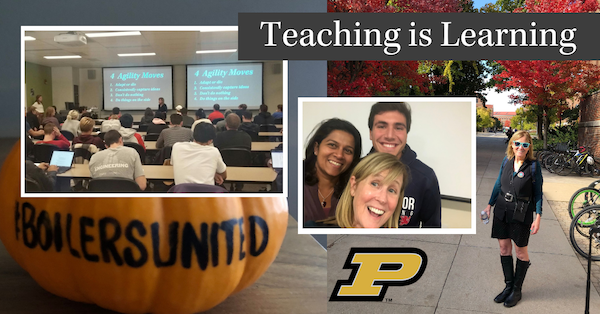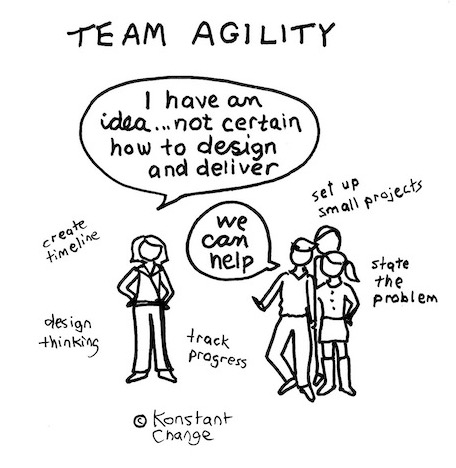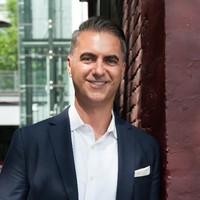
When presenting to a group of Purdue University freshman engineering students, Ahmed (a student), posed an insightful question,
“If I have an idea, but don’t know how to design the product or get it done, how can I accomplish it?”

I often wondered how engineers built something from a raw idea.
Or how inventors, engineers, scientists, and artists, like Gaudi, DaVinci, and Madame Curie, launched new ideas and completed them. Well, they weren’t always completed in their lifetime.
Innovative Product Design Requires Adaptable Diverse Agile Teams

The quick observation is no one takes this journey alone. Innovation requires a diverse group to understand the problem being solved and to collaborate. As a result, they evolve an idea into a finished product.
The brainchild of the unique thinker requires a team of open minds and an agile group to evolve the idea. Diversity of thought, age, culture, and gender across disciplines.
Historical Examples of Product Design Innovation
We often look to a genius legend like Leonardo DaVinci, a multi-disciplined artist and engineer from the 15th century. We might assume his solo efforts resulted in spectacular feats.
In reality, Leonardo’s vertical flying machine helicopter sketch for instance did not evolve into a working helicopter until the 1940s. Many of his ideas were brought to life by others.
Hedy Lamar’s co-invented a radio guidance system during World War II with composer George Antheil. However, it was not adopted until the 1960s. And the invention was eventually incorporated into blue-tooth technologies we use today.
If you are wondering if Hedy Lamar, the engineer, was also a famous actress, you are likely as surprised as I was that the answer is yes.
I posed the question, “If I have an idea, but don’t know how to design the product or get it done, how can I accomplish it?,” to business and innovation experts. There were 9 smart answers via LinkedIn. We will start with my first answer.
9 Solutions for Product Design: Bringing an Engineering Idea to Life

1 Marti Konstant
Workplace Futurist, Speaker, Writer, Author on Agility
The best products that meet customer needs are created using design thinking, team agility, and incorporate cross-functional thinking.
Companies and products exist today because a marketer, executive assistant, or librarian had the idea. But that person lacked the technical development expertise to bring the product to life.
These inventors assembled a team of engineers, artists, computer scientists, or data geeks to fully develop the idea. Watching an episode or two of Shark Tank is proof of the life of worthy ideas.

2 Liz Wilson
Change Catalyst, Culture Expert, and Trusted Advisor
As a Purdue Alum (BA Communication), Liz had three ideas:
- Do your research to make sure you know what’s out there that might connect to your idea. – Look for accelerator programs you can apply to where mentors and others can collaborate with you.
- Attend a “start up” week in a community that’s a magnet for people in your field, like Boulder Startup Week. (I’ll bet you can network with local Purdue alums who’d supply you with a home base for the week, hint hint.)
- Find a mentor. There are tons of Purdue alums all over the world. Mine LinkedIn to see if you can find someone who seems to have an interest in supporting and mentoring new talent. You’ll probably be able to tell from their group and volunteer activities on their profile.

3 Gregory Wade
Leadership Consulting, Strategic Partnership Advice + Business Strategist
Liz’s comment particularly resonates with me as the forward looking and entrepreneurial educational institutions recognize the importance of creating from within.
They establish entrepreneurship courses and curricula, create an incubator and/or partner with one, provide access to mentors and facilitators and an on-ramp to angel investors. The spinoff benefits out of a college/university can be immense.

4 Brad Farris
Business Growth Advisor, Facilitator, Consultant
Enlist a team, get a group of folks to work with you with diverse backgrounds and meet weekly to work on making progress!

5 Gina Covarrubias
Engineering Life Coach
Leaders don’t know the How. Leaders don’t require step-by-step instructions. They try, fail, try and keep failing as long as it takes.
When leaders take full responsibility for figuring out the How, they get to take full responsibility for their success. More importantly, when you are learning the skill of how to learn How, you are mastering the skill of creating anything and everything.

6 Karen Gordon
Founder and Chief Design Facilitator at We Design Think
I would suggest they reframe their statement to “the problem I am solving is…..” If they do that, things become simplified because the solution can be broken down into phases, starting with Minimum Viable Product (MVP).
From an agile perspective customer feedback is continuous while building the solution.

7 Dan Clay
Career Author and Blogger
Yes! Love the idea of framing it in terms of a problem. That way you can rally others who are interested in solving that problem and get people aligned to your vision.

8 Parissa Behnia
Executive Coach and Business Whisperer
One of the hardest things to learn, especially for high IQ-high performance people, is to realize that they can go further faster if they were to just let go of the idea of control or that they have to do it all themselves.
And, to let go of the idea that if they were to share it, the crowdsourcing of genius would make it an even more spectacular idea.

9 Deepa Kartha
Founder of Engagement Solutions Provider Journyz
Different ways based on how the person is wired. For me it’s always easier is to iterate and keep building and pivoting as needed rather that be in a complete theoretical framework.
Summary: Product Design and Innovation is Not a Solo Journey

The next time you have a brilliant idea, but don’t know how to do everything, assemble a team!
And thanks Ahmed for kicking off a great discussion. The best learning starts with a question. Hope your work as a space exploration enthusiast is brought to life as you study engineering at Purdue.
Related Articles:
The Creative Person Cannot Be Conquered
Workplace Agility for Careers and Companies
If you are interested in the future of work, career development, the workplace, personal branding, workforce trends/ideas, agility, or how to cultivate happy profitable employees, take a look at the following:
Marti’s 52 Ideas
Career Agility Guide
Happy Profitable Employees – Cultivate Career Agility, Don’t Fight it White Paper
For more details and the definition of career agility, click here.
You can also check out the best-selling book on Amazon, Activate Your Agile Career: How Responding to Change Will Inspire Your Life’s Work.
